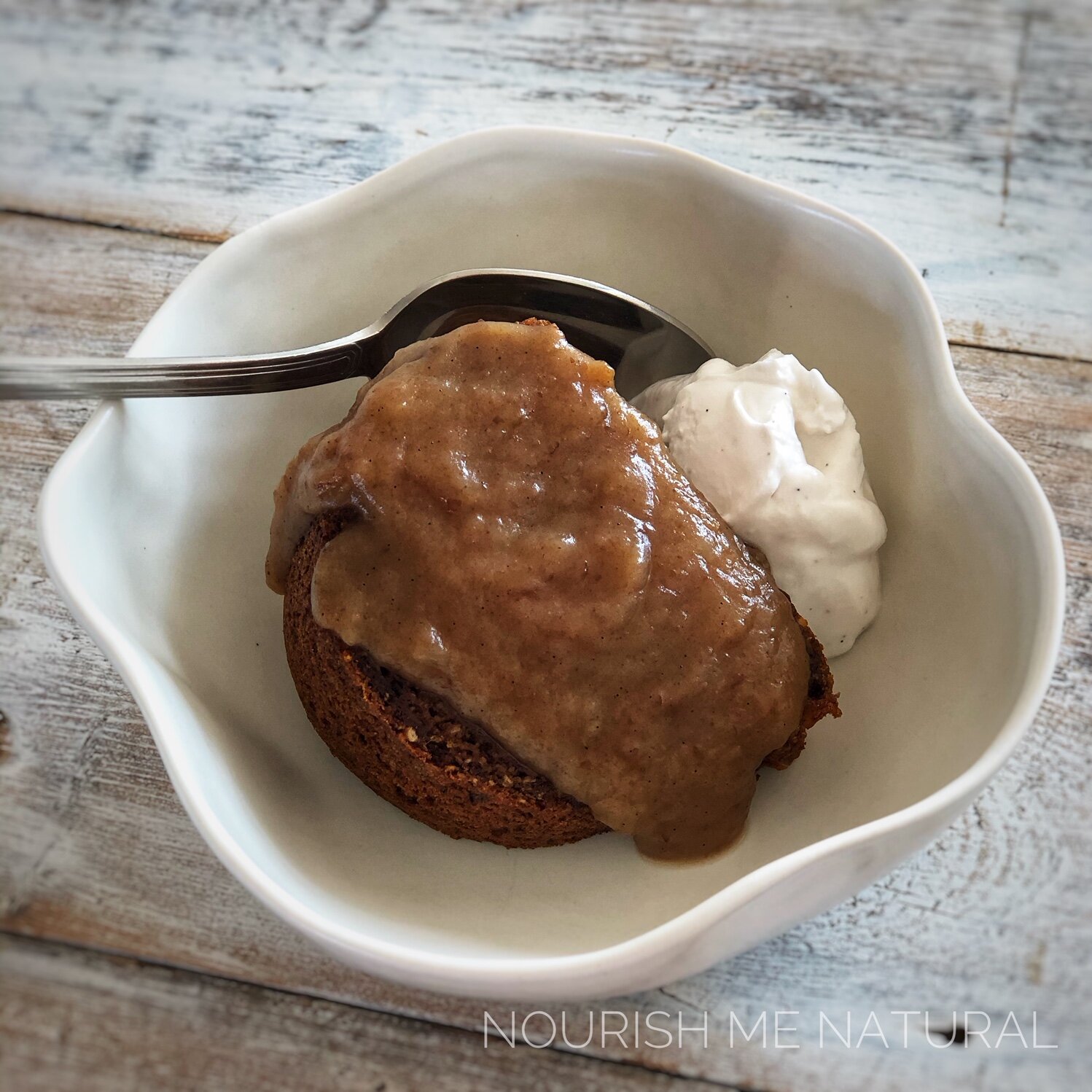This is a gluten-free (also grain-free) version of a recipe which I first developed with my mum in our family kitchen as a teen. Sadly, it has been forgotten or overlooked for quite some time, as I would have last made it last more than 5 years ago! I can't believe it has taken me this long to look at this recipe again, because by it's design, it screams 'make me grain-free'. Personally, I have been gluten-free by choice since mid-late 2014. Mostly, because I feel better for it, but also because there is more and more science linking gluten, and other properties of modern grains, especially if they are not prepared properly, to negative health effects on the gut with implications for dis-ease extending to other areas of the body. After removing gluten from my diet for several weeks and then re-introducing it in a controlled way or 'challenging' my body and noticing how it made me feel . . . I made the choice, like many others, to be gluten-free . . . which later expanded to largely removing all grains from my diet for a length of time, when I decided to take more of a gut-healing focus with my diet and followed the GAPS protocol which you might like to read more about here.
One of the star ingredients in this cake from a technical, and also nutritional perspective, is golden flaxseeds (or linseeds). These little babies are not only packed with healthy omega-3 fats, but owing to their gelling property contributed by their soluble dietary fibre component, are a very useful ingredient in gluten-free baking. Gluten-free cakes, if not formulated properly, can be dry and crumbly and may not rise as well. In conventional baking, the gluten in wheat flour functions to trap carbon dioxide produced by rising agents (baking powder and bicarb soda) which help the cake to rise. In this recipe, the soluble fibre in flaxseeds (or chia seeds will work too) take over this role and do quite a good job of it. This is the reason why it was so easy to swap out the wholemeal spelt flour in my original recipe for freshly ground almonds and a little tapioca flour. That's all I did. No need to add an egg either, which is usually a good tip to help with binding. The flaxseeds handle this role too! Clever flaxseeds ;)
What I really love about this recipe is that it is effectively a wholefood cake! There are no added fats and oils or sweeteners of any kind! The healthy fats are contributed by the flaxseeds, coconut and yoghurt, and of course the sweetness is contributed by the all the dates (yes there's quite a few). This cake is not overly sweet though and perfect for the level of sweetness my family has been accustomed to for years, but if you feel the need, you can jack up the level slightly by adding a little pure green powder or raw honey. Dates, especially fresh medjool dates, are one of my favourite ingredients for making raw, wholefood sweet treats. They are so versatile and packed full of vitamins, minerals, dietary fibre and health-promoting phytonutrients. You'll find some of my raw treat recipes featuring dates over at my Thermomix blog Mixing it Up HK, but eventually I’ll be sharing more raw treat recipes on here too. Just remember, that as the word 'treat' should imply, eat sparingly!
The original recipe suited baking in a small ring pan, so I decided to increase the recipe by 50 percent so it could be baked in my Bundt pan. If you adore the flavour of dates and coconut you'll adore the combination with vanilla in this cake. It's lovely and moist and is also gorgeous served warm as a dessert with a scoop of vanilla bean ice-cream or coconut yoghurt (or cream) in keeping with the dairy-free theme. This cake is also delicious served up with my real food quick & easy ‘caramel’ sauce.
Delicious serving suggestion! Turn your date & coconut cake into a dessert with my real food ‘caramel’ sauce & vanilla coconut yoghurt on the side.
what you'll need:
370g dried dates
280ml filtered water
100g raw or activated almonds
130g golden flaxseeds (linseeds)1/4 tsp Himalayan or sea salt
300g coconut yoghurt (or natural yoghurt), no added sugar*
3 large pastured eggs
2 tsp vanilla bean paste (or 1 tsp vanilla bean powder)
3 tsp baking powder (gluten free)
2 tsp bicarb soda
1/4 - 1/2 tsp pure green leaf stevia powder (optional)
130g dessicated coconut
60g tapioca flour
* you can use coconut cream with a splash of ACV in place of yoghurt.
how to make it:
Preheat fan-forced oven to 160 degrees C and grease your bundt pan with coconut oil. Finely dice or chop the dates with kitchen scissors and place in a medium glass bowl or jug. Pour over the boiling water and allow to stand for 10-15 minutes, stirring occasionally. Meanwhile, grind the almonds and flaxseeds into a fine meal using a coffee grinder in stages or a powerful food processor. Add yoghurt, eggs, vanilla, salt, baking powder, bicarb soda and date mixture to a large mixing bowl and whisk to combine. NOTE: the yoghurt and eggs should be a room temperature preferably. Fold through the ground almonds and flaxseeds, tapioca flour and dessicated coconut. The mixture will be thick and viscous. Pour the cake batter into the prepared Bundt pan and allow to rest for a few minutes. Place in the oven and bake for 30-35 minutes or until golden and a skewer inserted into the cake comes out clean. Slice and serve as is or as per the more indulgent suggestions above!
Thermomix method:
Preheat fan-forced oven to 160 degrees C and grease your Bundt pan with coconut oil.
Place a medium glass or ceramic bowl on top of the Thermomix, zero the scales and weigh in the whole dates and boiling water. Set aside for 10-15 minutes, stirring occasionally.
Meanwhile, grind the almonds and flaxseeds into a fine meal on speed 9 for 10-15 seconds. Don't over grind or the natural oils will begin to release and you'll start to make nut butter! Decant and set aside in a separate bowl to the date mixture.
Add the eggs to the TM bowl and whisk at 40C on speed 3 for 2-3 minutes until light and frothy. Next add the yoghurt, vanilla, salt, baking powder, bicarb soda and date mixture to the TM bowl and combine on speed 7 for 10-15 seconds.
Add the tapioca flour and dessicated coconut to the TM bowl, and return the ground almonds and flaxseeds. Combine well on speed 6 for 10-15 seconds. Scrape down the lid and sides of TM bowl with spatula and mix again. The mixture will be very thick and viscous. Pour the cake batter into the prepared Bundt pan and allow to rest for a few minutes.
Place in the oven and bake for 30-35 minutes or until golden and a skewer inserted into the cake comes out clean. Slice and serve as is or as per the more indulgent suggestions above.
Hi I’m Paula!
I’m a Functional Nutritionist, Health Coach & Certified GAPS Practitioner. I’m also a mum of two teenage girls and a real food foodie!




